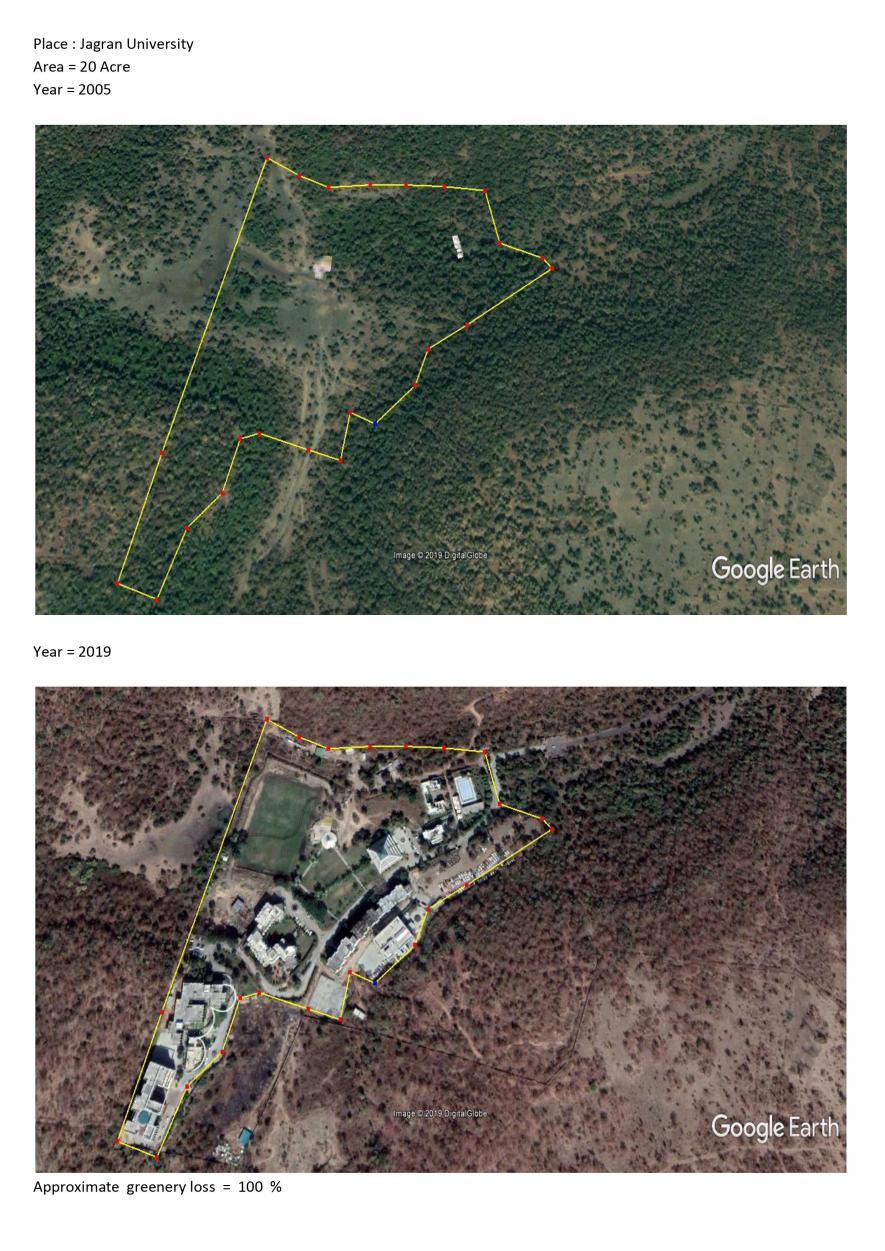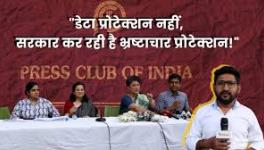26 % Green Cover Slashed, Bhopal's Climate Turned Unpleasant in Just two Decades

Representational image. | Image Courtesy: Skymet weather
Bhopal: On November 28, Bhopalites experienced a sunnier and hotter day, which was unusual to them when winter was just setting in.
The city recorded 30.7 degree celsius on Sunday, which was 3 degrees more than normal. Two decades ago, the city used to witness a temperature between maximum 24 to 26 degree celsius to minimum 16 and 18 degree celsius in the last week of November. Now it is oscillating between maximum 29 to 31 degree celsius to minimum 12.5 to 14 degree celsius.
Similarly, in summer, the city that used to witness maximum temperature between 38 to 34 degree celsius and minimum 24 to 26 in May and June 2000, is now oscillating between maximum 45 to 43 to minimum 23 to 25 degree celsius, according to the Bhopal Meteorological Office.
On June 9, 2019, the city was simmering at 46% celsius, highest in the last two decades. The same temperature was recorded on June 10, 1979, and June 5, 1995, says the Bhopal Meteorological office.

Nevertheless, the city has only an observatory to record temperature installed at Raja Bhoj airport, 12-km away from the city which has way less population as compared to the main city. Hence, it may not measure the actual temperature of the city, the official said.
Located far away from the sea, Bhopal is the capital of Madhya Pradesh, a state referred to as the heart of the country. The city's terrain goes up and down owing to it being settled and expanded over many small hills of the Malwa plateau, dotted with a number of artificial lakes and lush green cover making the climate pleasant throughout the year. In summers, the days are hotter and cool down during the evening, making the nights pleasant. Winters are cooler, but the wind does not give any chilling sense. Light to moderate rain in monsoons with greenery gives Bhopalites a very comfortable climate.

According to experts, the massive reduction in green cover, rise of vehicular pollution, surge in population by 30%, stubble burning and burning of waste are major reasons for climate change in the last two decades.
"Massive deforestation over the last two decades and increased vehicular pollution resulting from a population hike are the major reasons behind the climate change," said Mamta Yadav, senior scientist at Bhopal Meteorological Centre. "A tree works as an AC which regulates moisture, humidity and CO2 of its surroundings. But cutting it will create an imbalance and affect the climate,” she said.
The monsoon, which used to begin mid-June and last till September, has shrunk to 60-70 days. Similarly, the winter season, which begun with December and lasted till mid-February, is also shrinking, a MET official said.
With a surge in population from 18 lakh as per the 2001 Census to 23 lakh in 2011, and to approximately 26 lakh by 2020, along with a subsequent jump in vehicular pollution, the air quality index of Bhopal deteriorated by 51 points between 2010 to 2019.
According to the MP State Pollution Control Board, the AQI in 2010 was 110 which shot up to 161 in 2019. In addition to that, on December 3, 2021, the city recorded AQI 291, nine points less from ‘poor’.
Commenting on it, Zeeshan Khan, a city-based environmentalist pointed out that the city produces over 900 metric tonnes of waste every day, but disposes off hardly 500 metric tonnes. "The remaining waste is largely burnt along the roadside by the sanitation workers which further deteriorates the AQI of the city,” he said.

As far as green cover is concerned, between 2009 to 2019, the city has lost 26% of the green cover according to an independent survey conducted by the city-based Global Earth Society for Environment Energy and Development’s (G.SEED) with the help of Google images. The G.SEED is led by well-known environmentalist Shubash C Panday, director of International Congress of Environmental Research.
The report released on June 14, 2019 concludes, “Bhopal has been heading towards a city-without- trees. The city which had 35% green cover in 2009 has reduced to 9% in 2019. If this trend continues, the city will be left with only 3% forest cover by 2025 and the natural forest will be replaced by a concrete jungle."
“The city has lost over five lakh trees and vehicular pollution rose to 45 % between 2009 to 2019,” said Subhash C Pandey, former HOD of Department of Chemistry and Environment, Ministry of Higher Education Madhya Pradesh and former vice chairman of Haryana Pond Authority.

Environment researcher Abhay Sharma of G. SEED added that the study was spread over 13 sample points in Bhopal including the BRTS Hoshangabad road - the road leading to Kaliyasot Dam, the Smart City area of North Bhopal, the road patches on both sides of platform number 1 of Habibganj railway station, the area involved in Gammon India project opposite Tin Shed, area near two Link roads at Van Bhawan and the region near Jagran Lakecity University among others.
“The study of these sample points was compared with the Google imagery of the past one decade and we found that on nine points, 225 acres of forest area or trees were removed completely,” he said adding that at these places, about 1 lakh trees as old as 50 years were cut down.
Not only AQI and green cover, the independent survey conducted on public drinking water of the city, found it contaminated and unfit for drinking.
An independent study done in 2018 by the city-based environmentalist Dr Subhash C Pandey on 40 water samples taken from the public places including railway stations, government hospitals, government colleges, bus stations, municipal corporation tanks, hand pumps to check the quality, found unfit for drinking.
These samples were taken a week before the city bagged the title of being the second cleanest city of the country after Indore in 2018.
"The environmental and scientific approach is totally missing from the development projects of the city. Even the city officials failed to replicate the Indore model of waste management in Bhopal. As a result, in just two-decades, the city lost 26% of green cover, the air and water quality also deteriorated," lamented Pandey, adding that it's high time to take a scientific approach to save the city.
A 70-year-old Manjeet Duggal, a retired government official who migrated to Bhopal in the 1970s, said, "The only reason I settled in Bhopal is the pleasant weather and lush greenery. We shifted to a cooler from table and ceiling fans after 2000. But now the changes in weather forced us to install AC.”
Get the latest reports & analysis with people's perspective on Protests, movements & deep analytical videos, discussions of the current affairs in your Telegram app. Subscribe to NewsClick's Telegram channel & get Real-Time updates on stories, as they get published on our website.
























